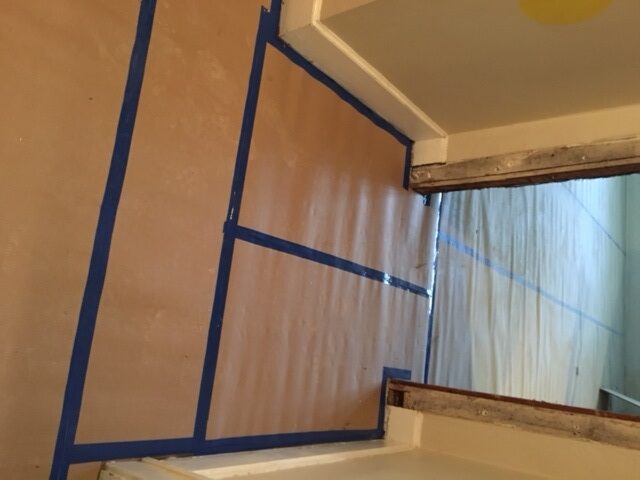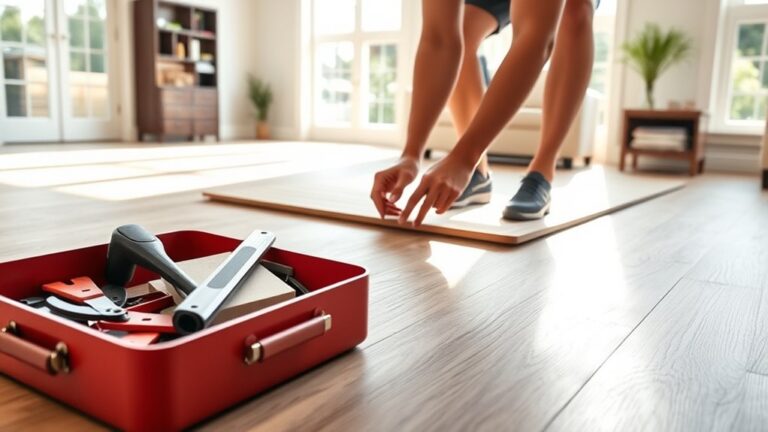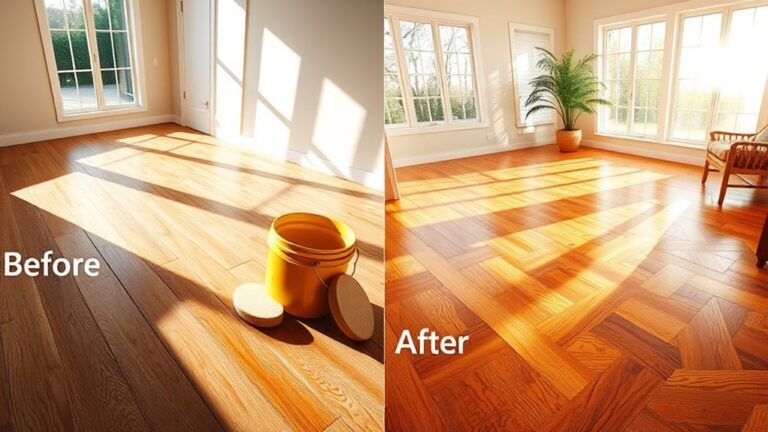To protect tile floors during construction, use durable coverings like plywood or builder’s paper. Opt for non-adhesive, breathable materials to avoid moisture-related damage.
Protecting tile floors during construction is crucial to maintaining their aesthetic integrity and ensuring their longevity. During the hustle and bustle of building or remodeling, floors are vulnerable to scratches, dents, and stains from tools, materials, and heavy foot traffic.
A thoughtful approach to floor protection saves time and money on potential repairs or cleaning post-construction. Proper covering materials, such as corrugated plastic sheets, thick fabric drop cloths, or specialty products designed for floor protection, provide a barrier against damage. Keeping the beauty of tile floors intact requires not only choosing the right protective materials but also securing them in place to prevent slippage and gaps. Remember, a small investment in protecting your floors during construction can avert costly refurbishments and extend the pristine condition of your tiling.
Introduction To Tile Floor Protection
Protecting tile floors during construction is crucial. Tiles are durable yet can be damaged by harsh conditions. Common issues include scratches, cracks, and stains. Activities like painting, heavy foot traffic, and the movement of large furniture or equipment can pose risks. Spills from materials like cement, paint, or chemicals also threaten tile integrity. Wear and tear is common, and without care, beautiful tiles can lose their appeal. A proper protection strategy is key for maintaining pristine tile floors.
| Construction Activity | Potential Damage to Tile Floors |
|---|---|
| Heavy Equipment Use | Cracks and Chips |
| Constant Foot Traffic | Scratches and Wear |
| Material Spills | Stains and Discoloration |
| Debris and Dust | Dirty Grout Lines |

Preventive Measures And Materials
Protecting tile floors during construction is crucial to prevent damage. Temporary floor coverings, like plastic sheeting, can safeguard tiles. Plastic sheeting, durable drop cloths, and corrugated cardboard provide a barrier against spills and impacts. They are easy to apply and remove.
Using sealants and coatings can also offer protection. These products create a transparent shield. Apply a thin layer directly onto the tiles. Let it dry before construction starts. Check the product’s compatibility with your tile type.
Plywood and Masonite are stout options. They resist heavy equipment and high traffic. Yet, their rigid nature can make them tough to install. Consider these tips:
- Cut to size for easy handling and placement.
- Ensure smooth edges to prevent tile scratches.
- Use with caution, as nails or screws can harm the tiles.
Best Practices In Construction Floor Protection
Protecting tile floors during construction is essential to prevent costly damages. Proper installation of protection materials is the first step to safeguarding floors. Use correx boards, felt paper, or plastic sheeting, ensuring all areas are covered.
of these materials is vital. Regular checks and replacements are necessary. This ensures consistent protection against dirt, spills, and heavy foot traffic. Engage in daily clean-up routines to keep the covered areas in top condition.
After construction concludes, careful removal of protection materials takes place. An inspection of the tile floors follows. It is crucial for identifying any hidden damage or necessary clean-up. Immediate action on any issues found prevents long-term harm to your floors.
Case Studies And Product Recommendations
Protecting tile floors during construction is vital.
Clients often share stories about using specialized floor covers.
These covers keep floors safe from cracks and stains. One client covered
their ceramic tiles with a durable protector during a
home remodel. The result was pristine floors, free from construction damage.
Our research highlights top-rated floor protection products.
For instance, Builder Board offers heavy-duty protection.
Its features include liquid repellence and easy installation. Many prefer
Eco-friendly options like Ram Board,
made from recycled materials. It is known for its impact resistance.
| Product Name | Key Feature | Eco-Friendly |
|---|---|---|
| Builder Board | Liquid repellent | No |
| Ram Board | Impact resistant | Yes |
Reviews guide consumers through the product selection process.
Professionals often review options on protection levels, durability,
and installation ease. Comparing these factors helps in making
informed decisions tailored to specific construction needs.
Legal And Insurance Considerations
Contractors must secure liability insurance before beginning work. This insurance protects against floor damage claims during construction. Legal troubles can cost dearly, but with the right coverage, businesses stay safeguarded.
Understanding laws around damaged floors is key. Damage incidents can lead to costly legal battles. Knowledge of such implications saves time and resources.
Documentation is crucial for construction projects. Keep records of all precautionary measures taken to avoid floor damage. This step proves diligence and could shield your business in any legal disputes.

Credit: www.tilesbay.com

Conclusion
Protecting your tile floors during construction pays off in the long run. Embracing these strategies will ensure a flawless finish without costly repairs. Remember, prevention is key; invest in the right materials and methods. Your beautifully preserved tiles will thank you for the extra care taken during these hectic times.
Safeguarding your investment is just that simple.




